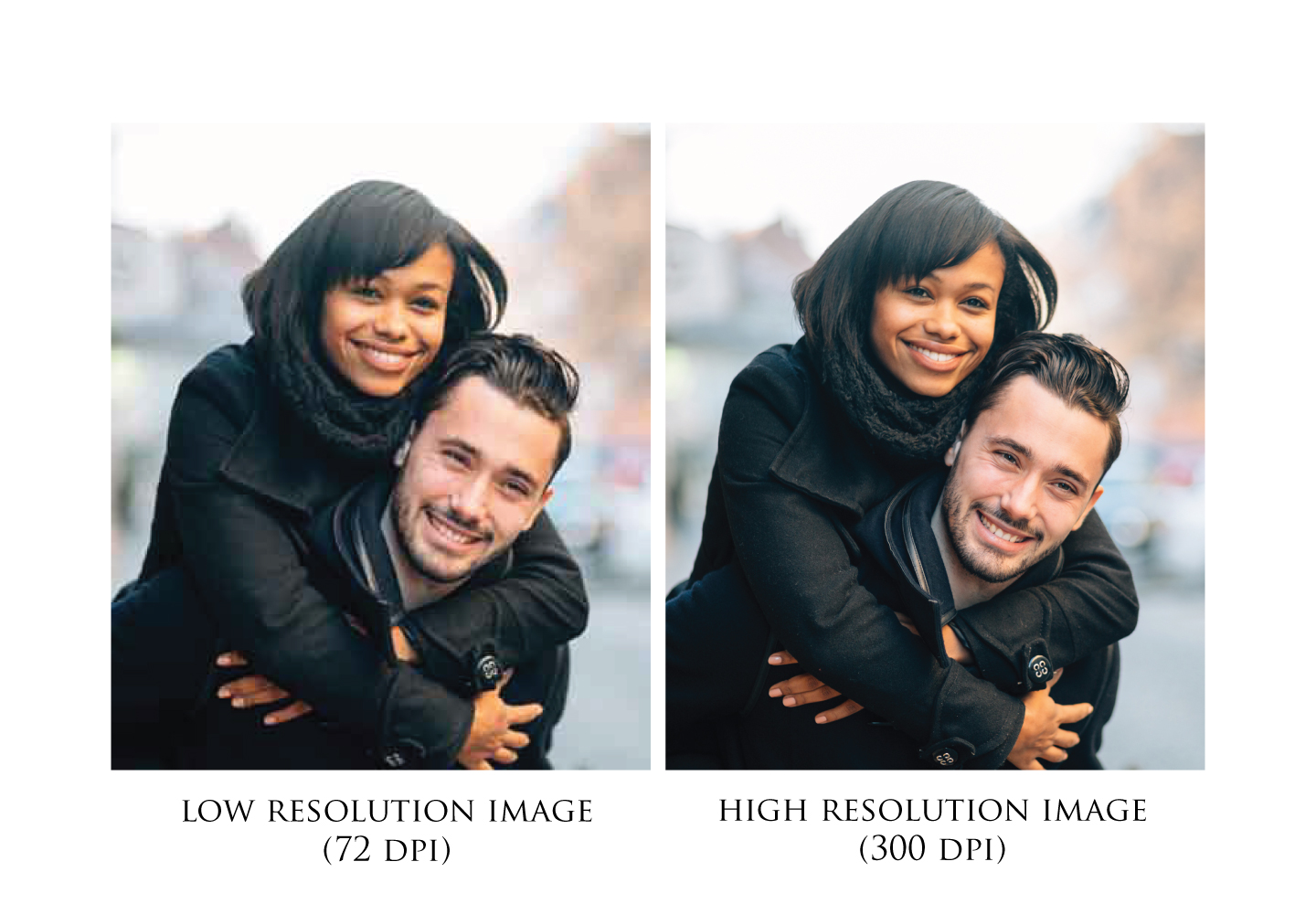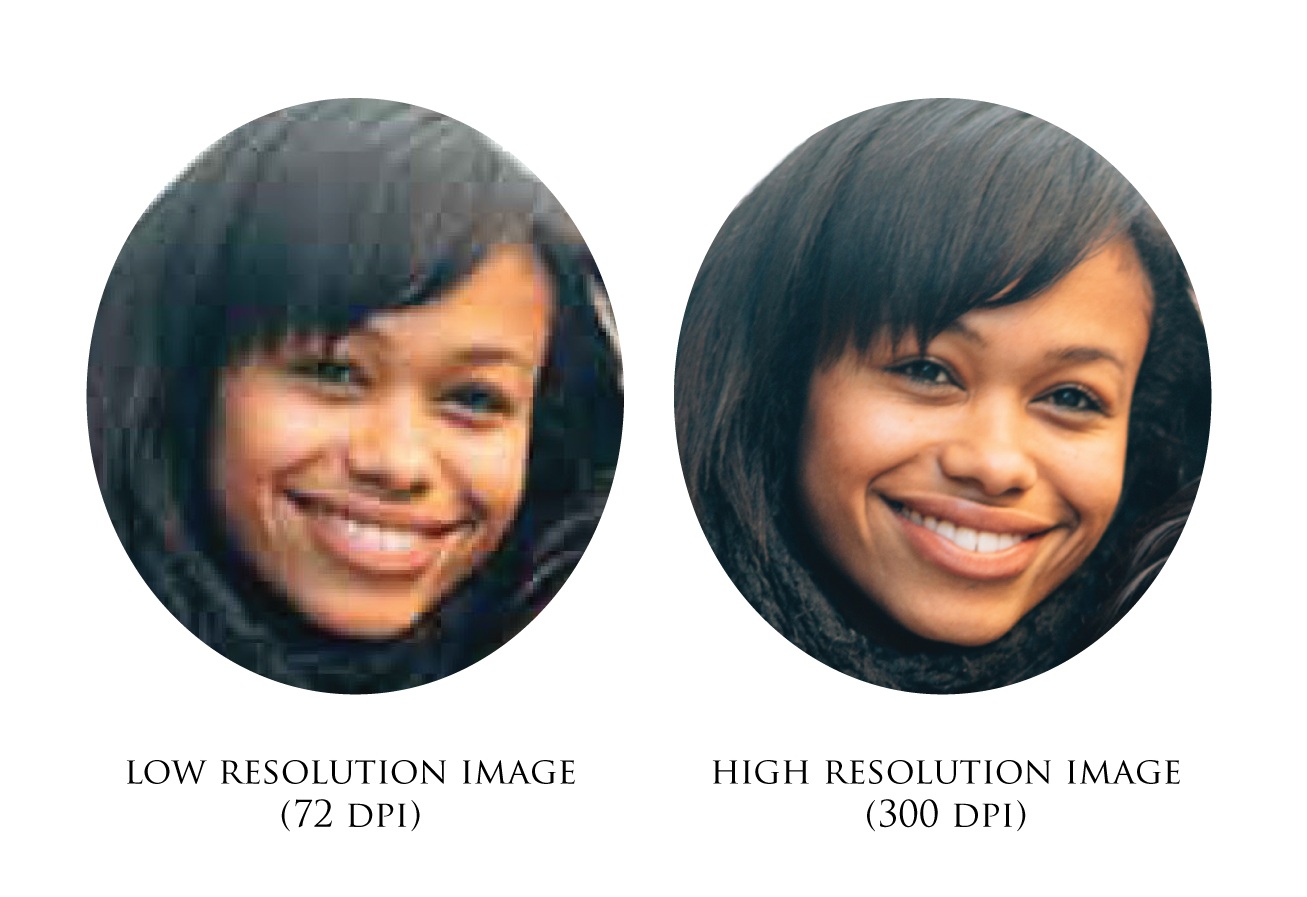High vs. Low Resolution: Does it Matter?
High vs. low resolution images: does it matter? In a word yes. Why? Many people tell me that their image looks good to them. Well it probably does on a computer screen. But if you want to print your image, it’s important to understand the difference in low resolution (res) and high res and why high res is important.
First let’s define resolution. The resolution of an image or picture describes the detail the image holds. The higher the resolution, the more detail the image has; the lower the resolution, the less detail the image has. Makes sense, doesn’t it?
What is DPI and why is it important? If an image has 300 dots per inch (dpi) that means that there is a lot of detail or information within that 1 square inch while an image that has only 72 dpi has very little detail. Yes, the image will look great on a computer screen because the standard resolution for internet browsers is 72 dpi. Because low resolution images have smaller file sizes, they take up less space and will load quicker which is exactly what we want on the web. Since we are talking print here, the more detail a photo has the better. Image detail does affect print quality. Low res images will be pixilated because low resolution images have very small pixel dimensions. Simply put, when a low res image is printed, it will be blurry.
Here’s a close-up of the young lady’s face. Which image would you rather print?
Can I change a low resolution image into a high resolution image that will be print quality? Well yes and no. If you have a large low res image the answer is yes, but if your image is small and low resolution, the answer is no. Have I totally confused you? Well, hopefully this example will help. Say you have an image that is 72 dpi and it measures 40 inches x 27 inches, then at 300 dpi it would measure 10 inches x 7 inches. But what if you have a picture that is 20 x 16 and is only 72 dpi? When you convert that to 300 dpi, the size of the picture drops to less than 4 x 6. If you want to print a large size photo you must have a large size 300 dpi image.
OK so what about kilobytes (KB) and magabytes (MB)? What if my picture is 128 KB. Is that large enough? 1000 KB = 1 MB. In other words, a 1 MB image has about 1,000 times the digital information than that of a 1 KB image.
So how can I tell the size of my image? To check the resolution on a PC, right click on the image and select Properties. That will tell you the size of the image – KB or MB. Here’s an example:
This image is 2.4 MB.
Next click on Details. That will tell you the resolution and the dimensions in pixels.
This image is 300 dpi and 1500 x 2100 pixels. If you want to know the size of your image in inches, just take the pixel number and divide by the dpi, in this case it’s 300. So 1500/300 = 5 and 2100/300 = 7. This print will be perfect at 5 x 7. Can you go larger? Yes, but remember there will be some loss of resolution. So be careful how much larger you go.
In review… when you want to print an image, remember that the larger the file, the better the quality of the print. Check the resolution of your picture under detail and always choose the largest size file you can.
I hope that this information has helped you understand the difference in high and low resolution images and why high res images are important when printing.
Thanks for stopping by…
Until next time,






